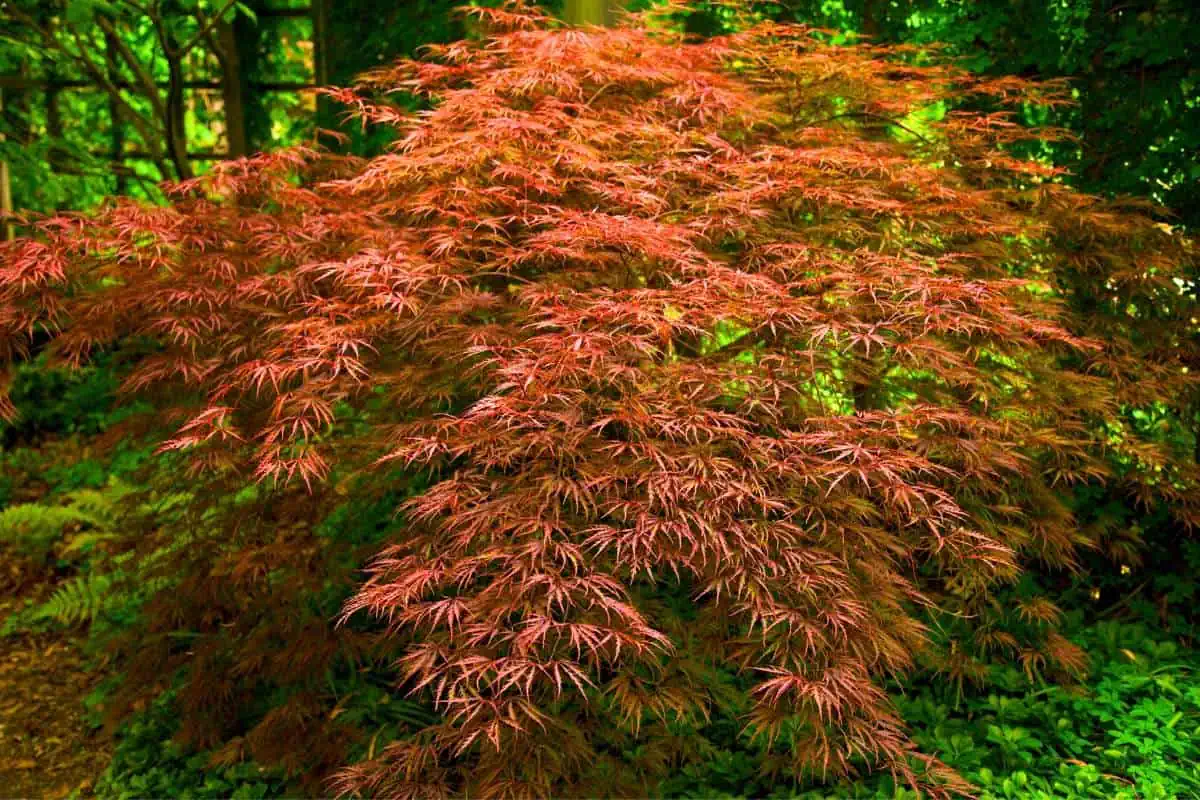Dwarf Japanese maples are beloved by gardeners for their stunning foliage and compact size. These small trees are perfect for adding a pop of color and texture to any garden or landscape. There are many different types of dwarf Japanese maples, each with its own unique characteristics and growing requirements.
In this article, we will explore some of the most common varieties of dwarf Japanese maples and provide information on how to care for them.
Types of Dwarf Japanese Maples
Dwarf Japanese maples are popular ornamental trees that add beauty and color to any garden. They are known for their delicate leaves, vibrant colors, and stunning foliage. There are many different types of dwarf Japanese maples, and each variety has its own unique characteristics.
In this section, we will explore the most common types of dwarf Japanese maples. One of the most popular types of dwarf Japanese maples is the Crimson Queen. This variety features deep red leaves that turn a vibrant crimson in the fall.
Another favorite is the Inaba Shidare, which has a weeping habit and delicate, lacy leaves that turn a bright red in the fall. Other common types of dwarf Japanese maples include the Tamukeyama, with its deep burgundy leaves, and the Waterfall, which has cascading branches and green leaves that turn yellow in the fall.
Red Japanese Maples
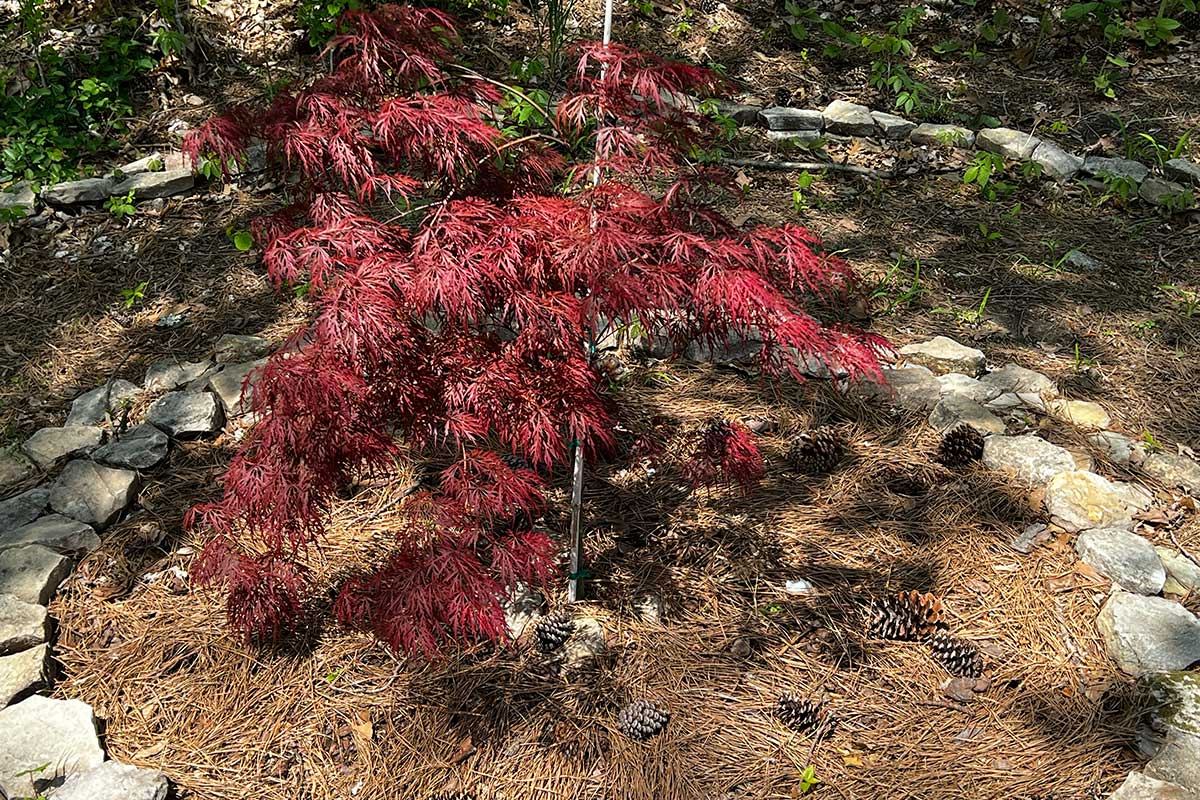
Red Japanese maples are known for their stunning red foliage and are one of the most popular types of dwarf Japanese maples. Some of the most common varieties of red Japanese maples include:
| Variety | Height | Width |
|---|---|---|
| Crimson Queen | 6-10 feet | 8-12 feet |
| Fireball | 5-6 feet | 4-5 feet |
| Inaba Shidare | 6-10 feet | 8-12 feet |
Red Japanese maples are perfect for adding a pop of color to any garden. They thrive in partial shade and are relatively easy to care for.
Green Japanese Maples
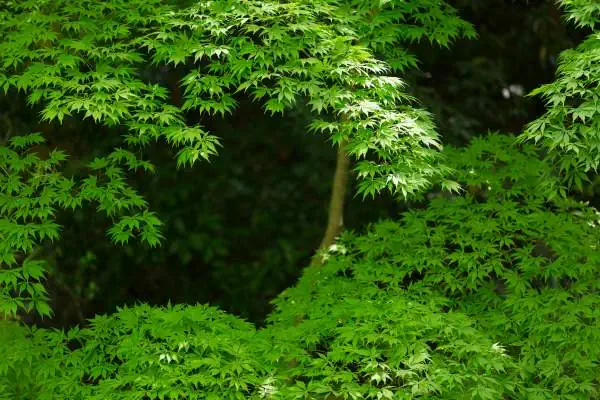
Green Japanese maples are known for their delicate green leaves and are a great choice for those who want a more subtle look. Some of the most common varieties of green Japanese maples include:
- Coonara Pygmy
- Karasugawa
- Viridis
Green Japanese maples are perfect for adding a touch of elegance to any garden. They prefer partial shade and are relatively low maintenance.
Variegated Japanese Maples
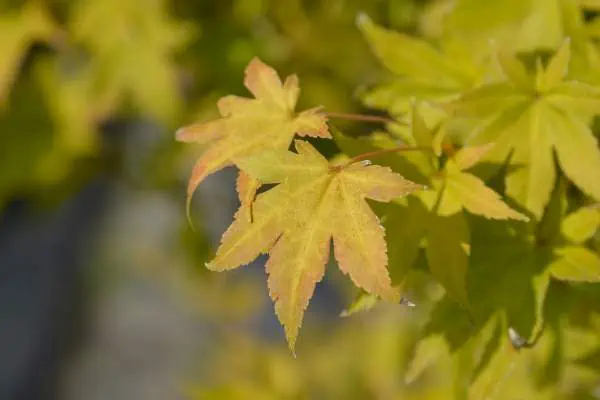
Variegated Japanese maples are known for their stunning foliage that features a mix of different colors. Some of the most common varieties of variegated Japanese maples include:
- Spring Delight
- Summer Gold
- Waterfall
Variegated Japanese maples are perfect for adding a unique touch to any garden. They prefer partial shade and are relatively easy to care for.
Most common varieties of dwarf Japanese maples
Japanese maples are a popular choice for gardeners due to their stunning foliage and compact size. Here are some of the most common varieties of dwarf Japanese maples:
1. Bloodgood
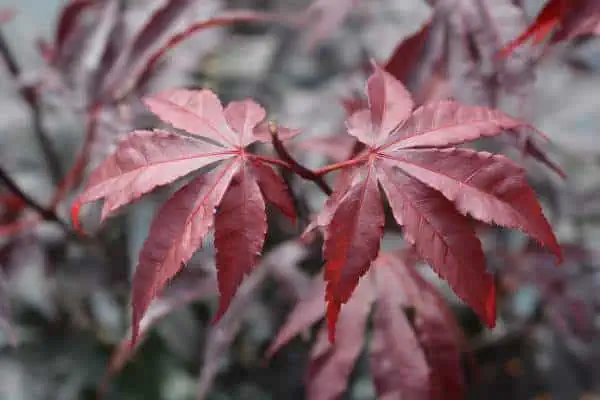
Bloodgood is one of the most popular and well-known varieties of Japanese maples. It has deep red leaves that turn a bright scarlet in the fall. It grows to a height of 10-15 feet and has a spread of 8-12 feet.
2. Crimson Queen
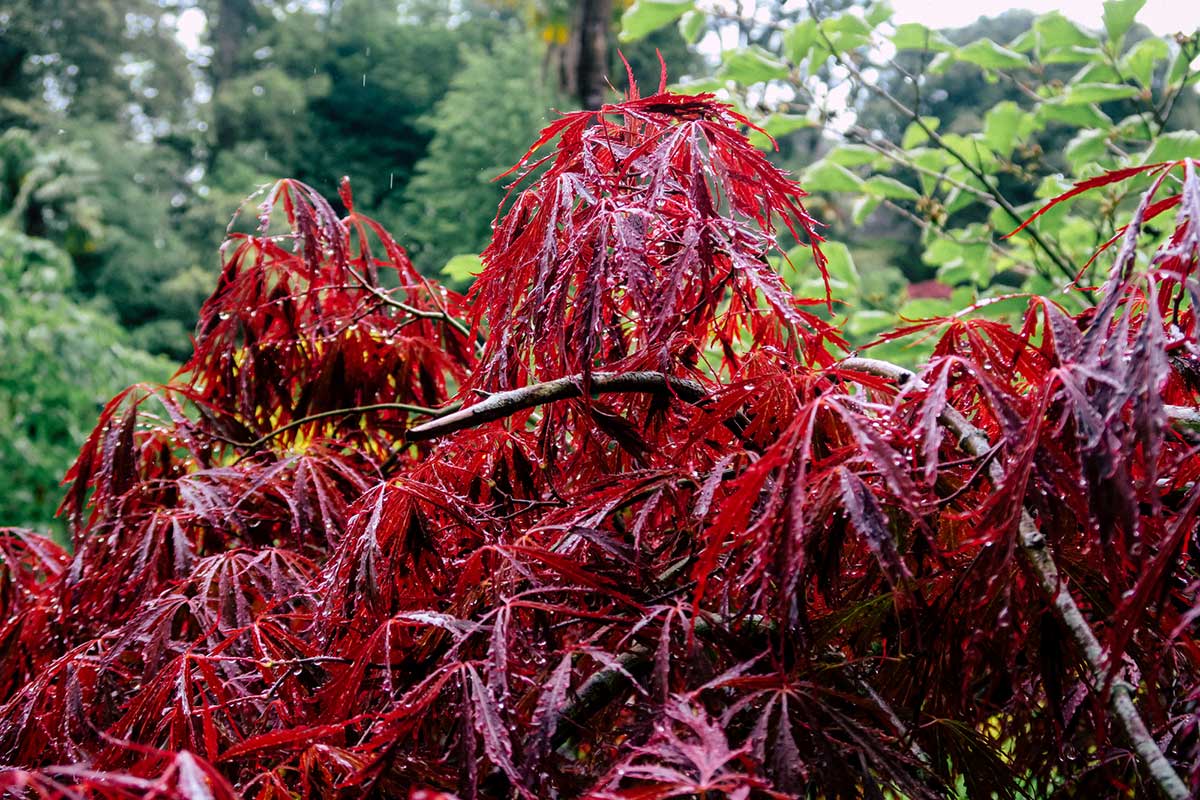
Crimson Queen is a weeping variety of Japanese maple that has deep red leaves that turn crimson in the fall. It grows to a height of 8-10 feet and has a spread of 10-12 feet.
3. Emperor I
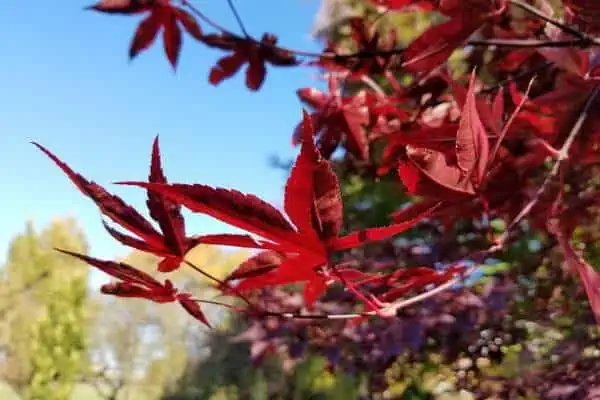
Emperor I is a stunning variety of Japanese maple that has bright red leaves in the spring that turn a deep purple-red in the summer. It grows to a height of 15-20 feet and has a spread of 10-12 feet.
4. Golden Full Moon
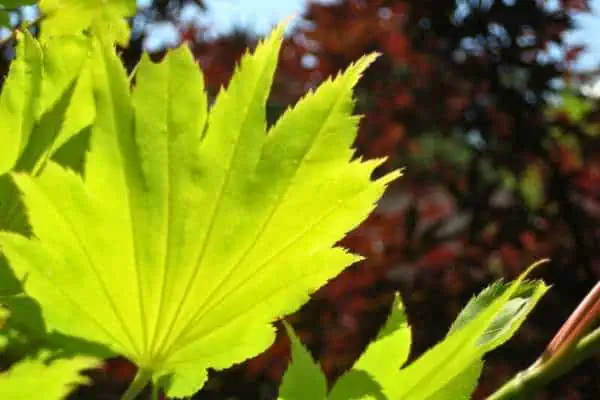
Golden Full Moon is a unique variety of Japanese maple that has bright green leaves that turn a golden yellow in the fall. It grows to a height of 8-10 feet and has a spread of 6-8 feet.
5. Inaba Shidare
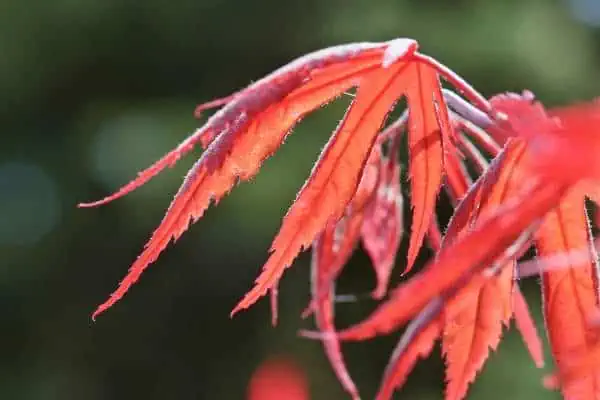
Inaba Shidare is a beautiful variety of Japanese maple that has deep red leaves that turn a bright scarlet in the fall. It grows to a height of 6-8 feet and has a spread of 8-10 feet.
6. Orangeola
Orangeola is a unique variety of Japanese maple that has orange-red leaves in the spring that turn a deep red in the summer. It grows to a height of 6-8 feet and has a spread of 4-6 feet.
7. Red Dragon
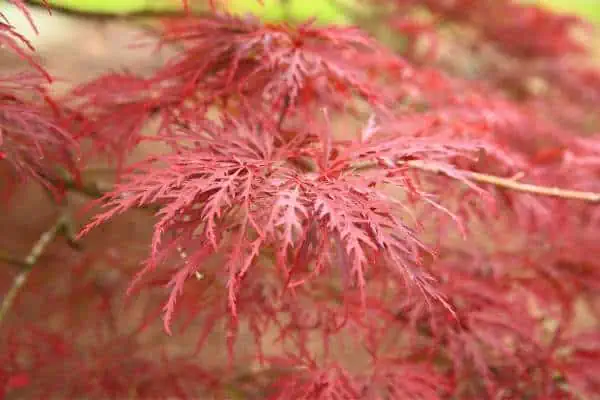
Red Dragon is a popular variety of Japanese maple that has deep red leaves that turn a bright scarlet in the fall. It grows to a height of 6-8 feet and has a spread of 4-6 feet.
8. Mikawa Yatsubusa
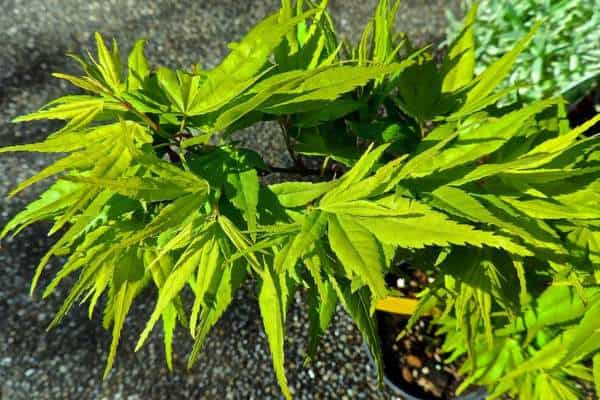
Mikawa Yatsubusa is a compact variety of Japanese maple that has small, delicate leaves that turn a bright red in the fall. It grows to a height of 6-8 feet and has a spread of 4-6 feet.
9. Shaina
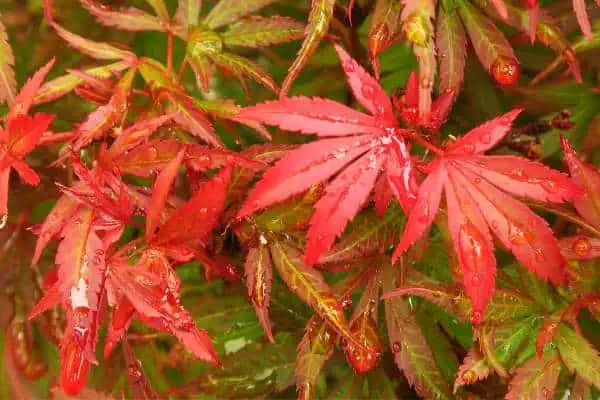
Shaina is a compact variety of Japanese maple that has deep red leaves that turn a bright scarlet in the fall. It grows to a height of 4-6 feet and has a spread of 3-4 feet.
10. Tamukeyama
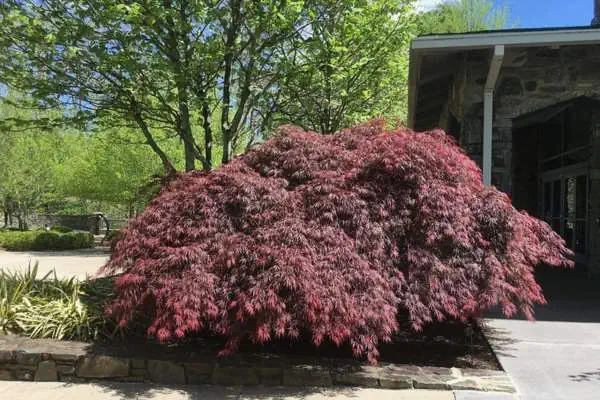
Tamukeyama is a stunning variety of Japanese maple that has deep red leaves that turn a bright scarlet in the fall. It grows to a height of 8-10 feet and has a spread of 10-12 feet.
Choosing your maple
When choosing a dwarf Japanese maple, it is important to consider factors such as the tree’s mature size, sun and shade requirements, and soil preferences. Some varieties prefer full sun, while others do best in partial shade.
Additionally, some types of dwarf Japanese maples are more cold-hardy than others and can withstand harsh winter conditions. By selecting the right variety for your specific climate and growing conditions, you can ensure that your dwarf Japanese maple thrives and adds beauty to your garden for years to come.
Here are some tips for choosing a dwarf Japanese maple:
1. Consider the adult size of the tree
Dwarf Japanese maples can range in size from just a few feet tall to upwards of 10 feet. Make sure to choose a variety that will fit well in your intended planting location.
2. Look for a variety that fits your desired aesthetic
Japanese maples come in a wide range of leaf colors and shapes, including red, green, and variegated varieties. Choose a variety that fits your desired look and complements your existing landscaping.
3. Consider the growing conditions
Dwarf Japanese maples prefer well-draining soil and partial shade. Make sure to choose a planting location that provides adequate moisture and protection from strong winds.
4. Check for disease resistance
Some Japanese maple varieties are more resistant to diseases and pests than others. Research the variety you’re considering and choose a disease-resistant cultivar to ensure the health of your tree.
5. Consider your climate
While Japanese maples can thrive in a range of climates, some varieties are better suited for certain regions. Make sure to choose a variety that is well-suited for your local climate to ensure the health and longevity of your tree.
